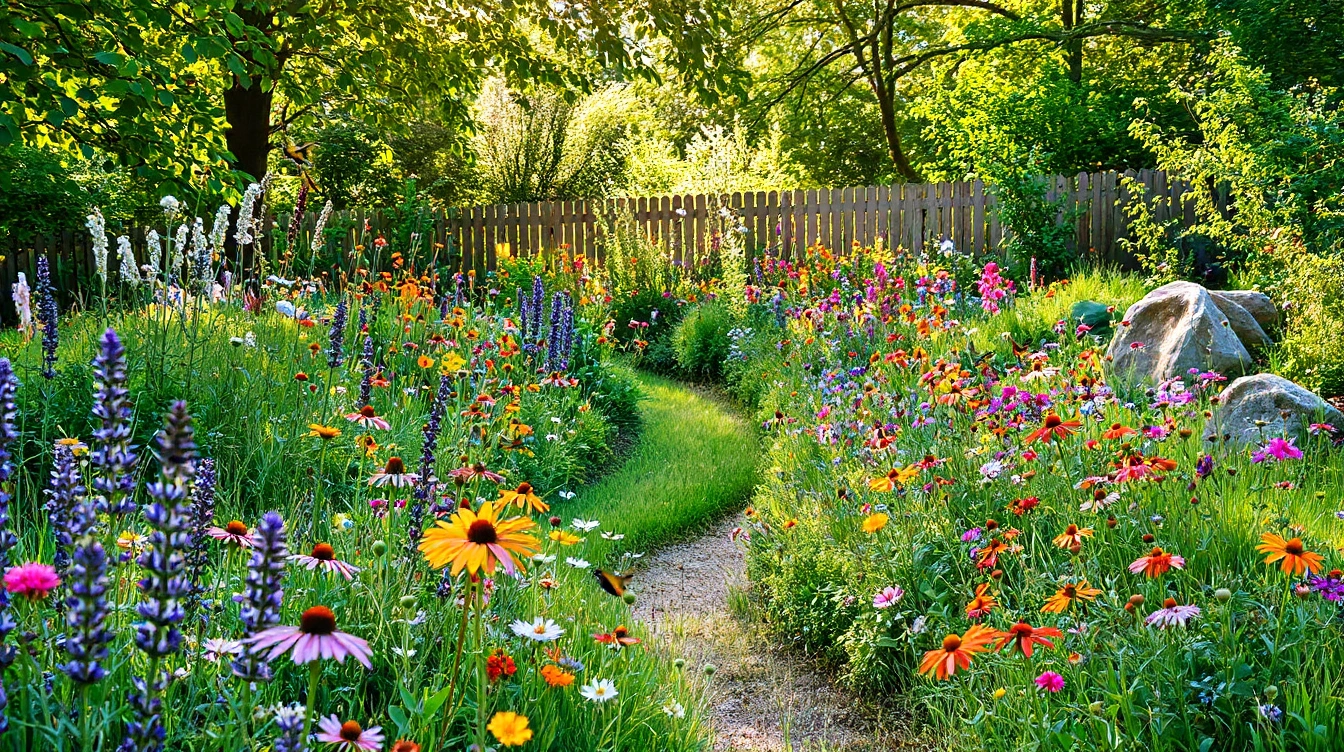Essential Steps for Creating a Pollinator-Friendly Garden
Creating a UK pollinator garden starts with selecting native plants and flowers that thrive in the local climate. Native species provide the best nutrition for bees and butterflies, ensuring pollinators can find the resources they need throughout the seasons. Incorporating a variety of flowering plants with staggered bloom times will keep the garden buzzing from spring to autumn.
Reducing or completely eliminating pesticide use is crucial for pollinator-friendly gardening. Many common pesticides are harmful to bees and butterflies, so switching to organic alternatives or natural pest control methods safeguards these vital insects while maintaining plant health.
Topic to read : How can you design a sensory garden for relaxation in the UK?
Additionally, making a garden wildlife-friendly involves providing diverse habitats. Features such as bee hotels, log piles, and wildflower patches offer shelter and breeding grounds, encouraging pollinators to stay and thrive. Together, these steps form a holistic approach to attracting bees and butterflies, turning any garden into a vibrant sanctuary for pollinators.
Recommended UK Native Plants and Flowers
When aiming to support local ecosystems, selecting UK native plants for pollinators is crucial. These species have co-evolved with native insects, providing optimal nutrition and habitat. Some of the best flowers for bees include wildflowers like red clover, foxglove, and heather. These offer rich nectar and pollen that encourage bumblebees and solitary bees to thrive.
Also read : How Can Your UK Home Garden Adapt to Climate Change?
For those interested in butterfly-attracting plants, species such as buddleia, violets, and honeysuckle serve as excellent larval food and nectar sources. Selecting a varied pollinator plant list ensures that different species of pollinators can find suitable nourishment throughout the year. This approach supports biodiversity and maintains healthy pollinator populations.
A seasonal blooming guide is essential for a continuous food supply. Early bloomers like snowdrops benefit early-flying bees, while late bloomers such as ivy provide vital resources before winter. Gardeners should seek out native plant nurseries or reputable suppliers specializing in pollinator-friendly stock to guarantee authentic UK native plants for pollinators. Prompt sourcing helps create a sustainable environment that truly boosts pollinator survival and garden vitality.
Supporting Pollinators with Garden Features and Habitats
Creating pollinator habitats is essential to support bees, butterflies, and other vital insects. One effective feature is installing bee hotels or insect houses. These provide shelter for solitary bees, allowing them to nest safely. Constructing bee hotels with varied hole sizes caters to different species, increasing biodiversity. Place them in sunny, sheltered spots to maximize occupancy.
Water sources are equally important. Shallow dishes filled with water or natural wildlife ponds serve as hydration points for pollinators. Ensure these have landing spots like smooth stones so insects can sip water safely. Wildlife ponds also encourage other beneficial species that contribute to your garden’s ecosystem.
Maintaining shelter for pollinators involves leaving some areas undisturbed. Let parts of your garden stay natural to facilitate nesting and overwintering. Avoid excessive tidying, as leaf litter and bare patches offer critical refuge. Together, these garden features and habitats create a welcoming environment where pollinators can thrive throughout the year.
Garden Care and Maintenance for Year-Round Pollinator Support
Maintaining your garden with seasonal pollinator maintenance in mind ensures a thriving habitat all year. In spring and summer, limit heavy pruning and disruptive soil work as many pollinators, including bees and butterflies, are nesting or foraging. This avoids disturbing their life cycles and helps sustain healthy populations.
During autumn and winter, focus on leaving seed heads and some leaf litter in place. These natural elements provide vital food sources and shelter for pollinators over winter. In particular, solitary bees and certain butterflies rely on undisturbed garden features to survive colder months.
Garden care for wildlife should embrace this approach: adapt pruning schedules, delay tidying debris until after overwintering insects have left, and minimize pesticide use throughout the year to protect sensitive pollinator species.
Following pollinator seasonal tips UK, gardeners can fine-tune their maintenance habits by observing bloom cycles and insect activity. This step-by-step adjustment ensures that each season supports pollinator health rather than hinders it. Ultimately, these careful practices foster a resilient ecosystem in your garden, enhancing biodiversity and flowering plant success.
The Role of Precision and Recall in Evaluating Answers
Understanding precision and recall is crucial when assessing the quality of answers, especially in datasets like SQuAD. Precision measures the accuracy of the predicted answer by calculating the proportion of correct tokens within the prediction. Formally, precision is defined as:
Precision tp / (tp + fp)
Here, tp (true positives) counts the tokens shared between the predicted answer and the correct answer, while fp (false positives) counts tokens present in the prediction but absent from the correct answer.
Recall, on the other hand, measures the completeness of the prediction, indicating how many correct tokens were successfully captured compared to the total correct tokens available. Its formula is:
Recall tp / (tp + fn)
where fn (false negatives) represents tokens in the correct answer that the prediction missed.
Together, precision and recall provide a balanced view of answer quality. A high precision with low recall means the answer is accurate but incomplete, whereas the opposite indicates a thorough but less precise prediction. Evaluating these metrics allows for optimized models and better understanding of where predictions succeed or falter in matching ground truth answers.









